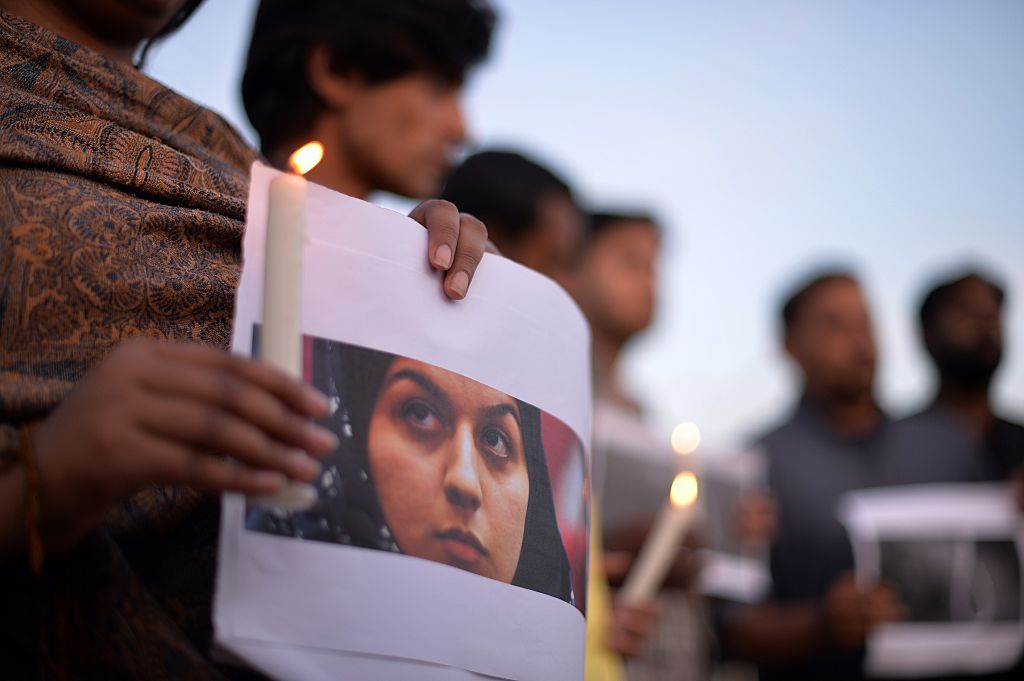Rape and other sexual assaults against those who dare to show their hostility to the regime are commonplace in Iran, especially since September, due to the new protests.
Women are the primary victims, especially those of Kurdish origin from the country’s west.
After CNN published testimonies revealing the almost systematic use of rape on women detained and imprisoned by Iranian authorities, Alice Bordaçarre, head of the Women’s Rights office of the International Federation for Human Rights (FIDH), made statements about this criminal practice in the current context of Iran.
“In the 1980s and after the uprising that followed Ahmadinejad’s re-election in 2009, many cases of rape had already been reported. It is, therefore, an unfortunately recurring strategy of the security forces in Iran,” Bordaçarre describes to Huffington Post.

“It is a weapon, a strategic tool used to humiliate, dominate, intimidate, destroy individuals and communities,” he points out.
One of the victims is 20-year-old Armita Abbasi, who started posting criticisms of the regime on social media as soon as protests began in Iran.
However, overnight, she disappeared from digital media.
Abbasi became a symbol of the movement, like Mahsa Amini – who was killed during her arrest for not wearing the hijab (headscarf), initiating the protests – or Nika Shakarami – who, at the age of 16, also died when the customs police arrested her.
The 20-year-old was later recognized by doctors at a hospital in the country.
The young woman was reportedly arrested by police, tortured, and sexually abused. She had her head shaved and was surrounded by police officers. A nurse also told CNN that police prevented staff members from speaking with Armita Abbasi.
Investigations
Rebin Rahmani, a human rights activist with the Kurdistan organization, told the media outlet that another woman in the interrogation room was asked if she was “ready” to let officers rape her sister if she did not speak about what the authorities wanted her to tell journalists.
The international groups Human Rights Watch and Amnesty International have also reported cases of sexual assaults in prisons since protests began in mid-September in Iran.
They explain that protesters are often arrested and then transferred from one place to another without their families knowing where they are being held. Hundreds of people have disappeared in this labyrinthine network of prisons and detention centers.
The International Federation for Human Rights explains that three member organizations in Iran keep it informed of the situation.
“We conduct advocacy investigations to remind the authorities of their international obligations and litigation investigations to file complaints or communications to the International Criminal Court (ICC),” Bordaçarre says.
However, Iran has not ratified the Rome Statute and is not a member state of the ICC.
Despite censorship and internet cuts in the country, videos started to circulate on social networks, where it is possible to see underage girls removing their veils.
Young girls are among the protesters arrested, and there are reports that they were raped in prison.
According to the international federation, there is no evidence but concern about this possibility.
The body points out that some confidential information remains difficult to confirm in the current context.
According to the French periodical La revue Géopolitique, all women and young people testified to sexual abuse.
“These accounts have brought to light a practice of filming assaults to blackmail the victims,” the vehicle published in an article.
Four months of demonstrations
The wave of protests came about with the death of 22-year-old Mahsa Amini, who died while being arrested.
According to authorities, the crime she committed was “dressing inappropriately” by not wearing a hijab. According to witnesses, she was reportedly tortured and executed.
In the following days, protesters in the capital, Tehran, and other cities across the country blocked traffic, set fire to garbage cans and police vehicles, threw stones at security forces, and shouted anti-government messages, according to the official Irna news agency.
“No to the headscarf, no to the turban, yes to freedom and equality,” the protesters shouted. The slogan is echoed in solidarity protests in other major cities in the country and abroad, especially in New York, Paris and Istanbul.
These demonstrations constitute “a significant shock” in Iran, “it’s a social crisis” in an “increasingly secularized” society, David Rigoulet-Roze, a research associate at the French Iris Institute, told AFP news agency.

